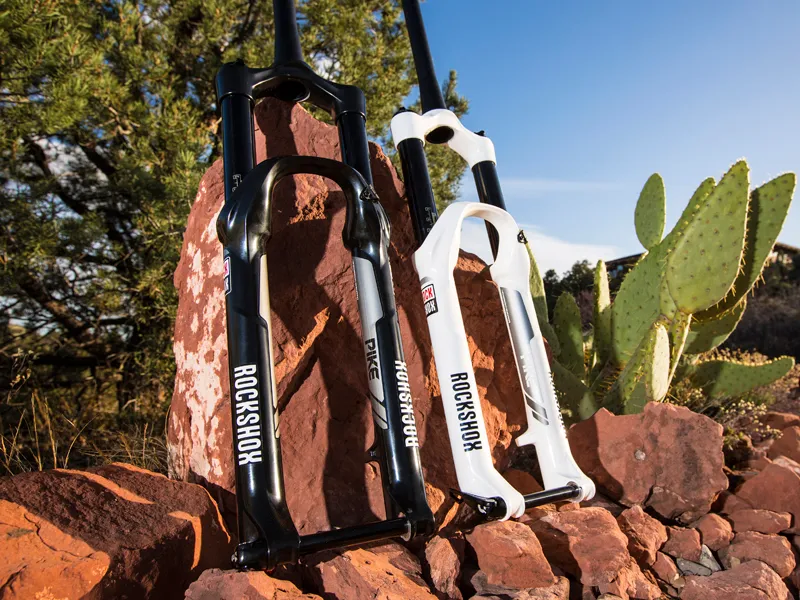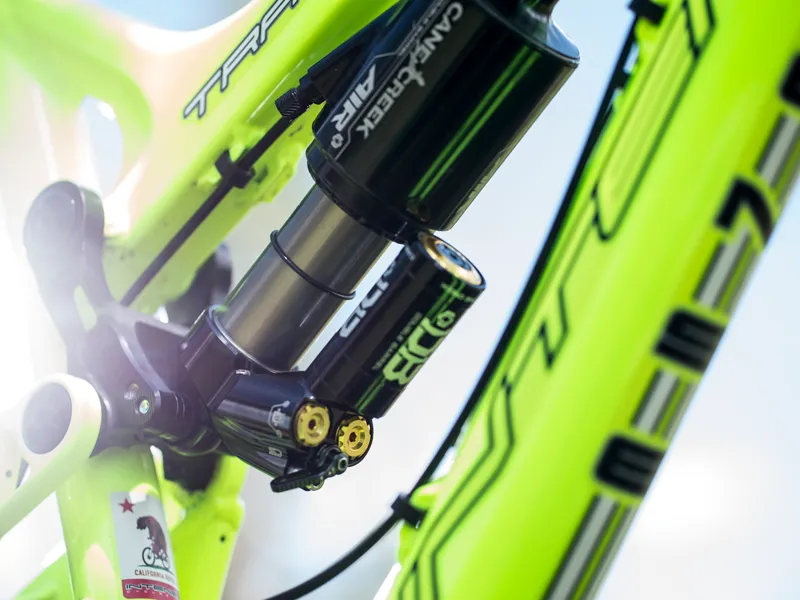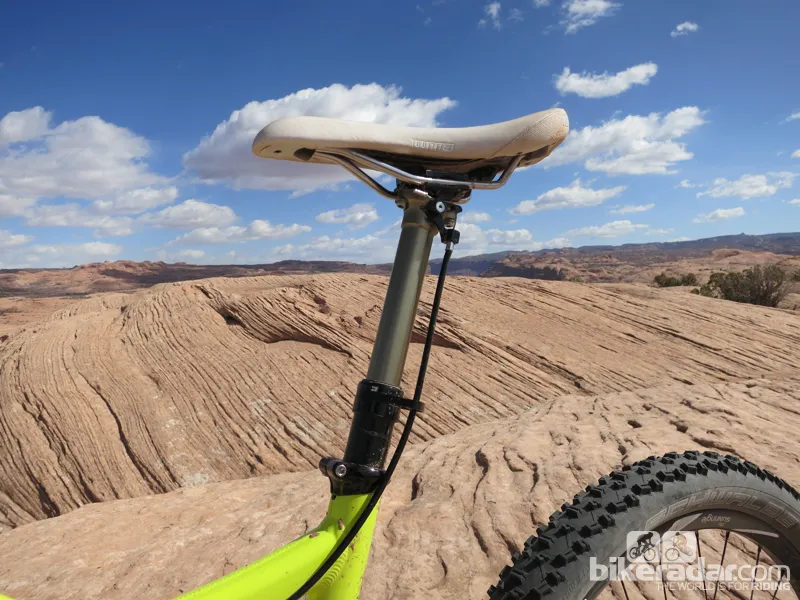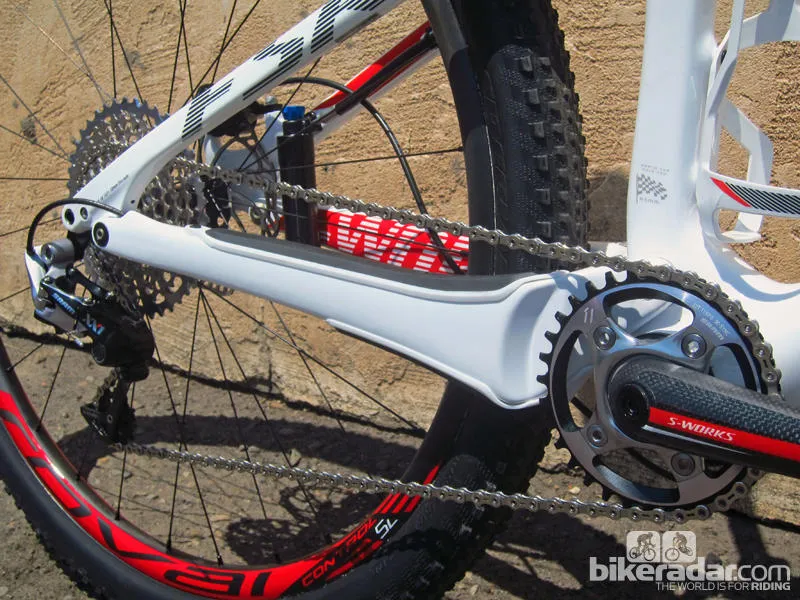Another year is just about behind us, along with another year's worth of riding a huge range of brand new bike products – some of which have been awesome, and others less so.
Here's the third and final part of our editors' roundup of the best new bike gear of the year.
RockShox Pike fork
The RockShox Pike has been showered with superlatives since its introduction this spring. And for good reason – it has all the attributes a quality trail for should. It's impressively light (4.04-4.14lb, depending on wheelsize) yet also stiff, thanks to the 35mm stanchions, and the RockShox Charger damper means it can be plush when it needs to be without blowing through all of its travel. Service intervals are twice as long as the competition and our test forks have proved quite reliable too.
Having logged many miles on this fork in 2013, I will go on record as stating that the many gushing media reviews of this fork are correct – it is a game changer.

RockShox Pike fork: a game-changer
Cane Creek DB Air CS shock
Cane Creek’s Double Barrel Air shock is an impressive work of suspension engineering. It offers an incredible range of adjustments, including the ability to independently tune high- and low-speed rebound and compression damping. For 2013 Cane Creek added yet another adjustment to this complex piece of hardware, one that any rider can appreciate – the Climb Switch.
The Climb Switch is not a lockout lever or 'just' a platform damping adjustment. It’s a new and better way to think about suspension. When toggled on, it restricts the flow of oil through the a pair of rebound and compression circuits to slow the shock's compression and return speed to better match the slower speeds encountered while riding uphill – so there's no getting bucked off the saddle while cranking onto obstacles and no wallowing into the travel as the rear wheel rolls off them.

The 'Climb Switch' is a little knob that can make a big difference on the trail
Thomson Elite Dropper seatpost
No longer content with simply producing precision-machined stems and seatposts, Thomson introduced products in several new categories in 2013, including carbon and titanium handlebars, and most noteworthy of all, a dropper seatpost.
In terms of function, the Elite Dropper isn’t much different from the many other adjustable-travel seatposts on the market. It has 5in (125mm) of adjustable travel which is controlled with a remote or lever.
BikeRadar currently has an Elite Dropper on long-term test and are pleased to report that over the course of six months of rigorous testing the post has been unfailingly reliable. (We were also given the opportunity to ride a preproduction post this spring, read out first impressions here.)
Thomson is currently working on a version of the Elite Dropper in a 27.2mm version with 3in drop. While the Elite Dropper or the 3in version still in development aren’t groundbreaking, the company’s plans for a road dropper with an extended, dropped and shock-absorbing 'pavé' mode and another version of the Elite Dropper with actuation controlled via a Bluetooth signal are. Will they catch on? Only time will tell, but we applaud the innovation.

The Elite Dropper post has fared well on long-term tests
Santa Cruz and the 650b onslaught
If you happen to bump into an employee of Santa Cruz Bicycles at a New Year’s Eve party, offer to buy them a drink, as they could probably use it after such a hectic year of product development.
Within the span of a few short months the company overhauled the majority of its trail bikes to accommodate medium-sized wheels. Iconic 26in models were retired or reworked to make room for new, more progressive designs. The VPP-equipped Bronson and 5010, offered in both carbon and aluminum, may have led the charge, but the more affordable, single-pivot Heckler and Bantam are no slouches either.
Such an impressive commitment to change that has resulted in several new and capable trail bikes deserves recognition.

The Bronson is but one of several capable 650b trail bikes Santa Cruz launched in 2013
1x drivetrains and 1x-specfic frames
After 650b wheels, the 1x movement was, the most important thing to happen in mountain bike technology in 2013. SRAM’s XX1 and X01 groups have proven that 1x drivetrains can work for cross-country as well as enduro racing.
Imitation may be the sincerest form of flattery, and the growing number of companies producing narrow-wide chainrings for 1x conversions points towards even greater potential for growth in this market. But it doesn’t stop with components; 1x drivetrains have the potential to revolutionize frame design by allowing engineers to shorten chainstays and optimize pivot placement without regard for front derailleurs.
Lower weights, less complexity – what’s not to like? Well, not every rider has the quads to crank up climbs with a 32, 30, or even a 28T chainring. The front derailleur isn’t going to become extinct any time soon, but single-ring drivetrains are ushering in a new era in mountain bike design.

The 2014 Specialized Epic World Cup can't run a front derailleur, as its massive chainstays take up most of the available real estate. It is one of a growing number of frames designed without regard to front derailleur placement
